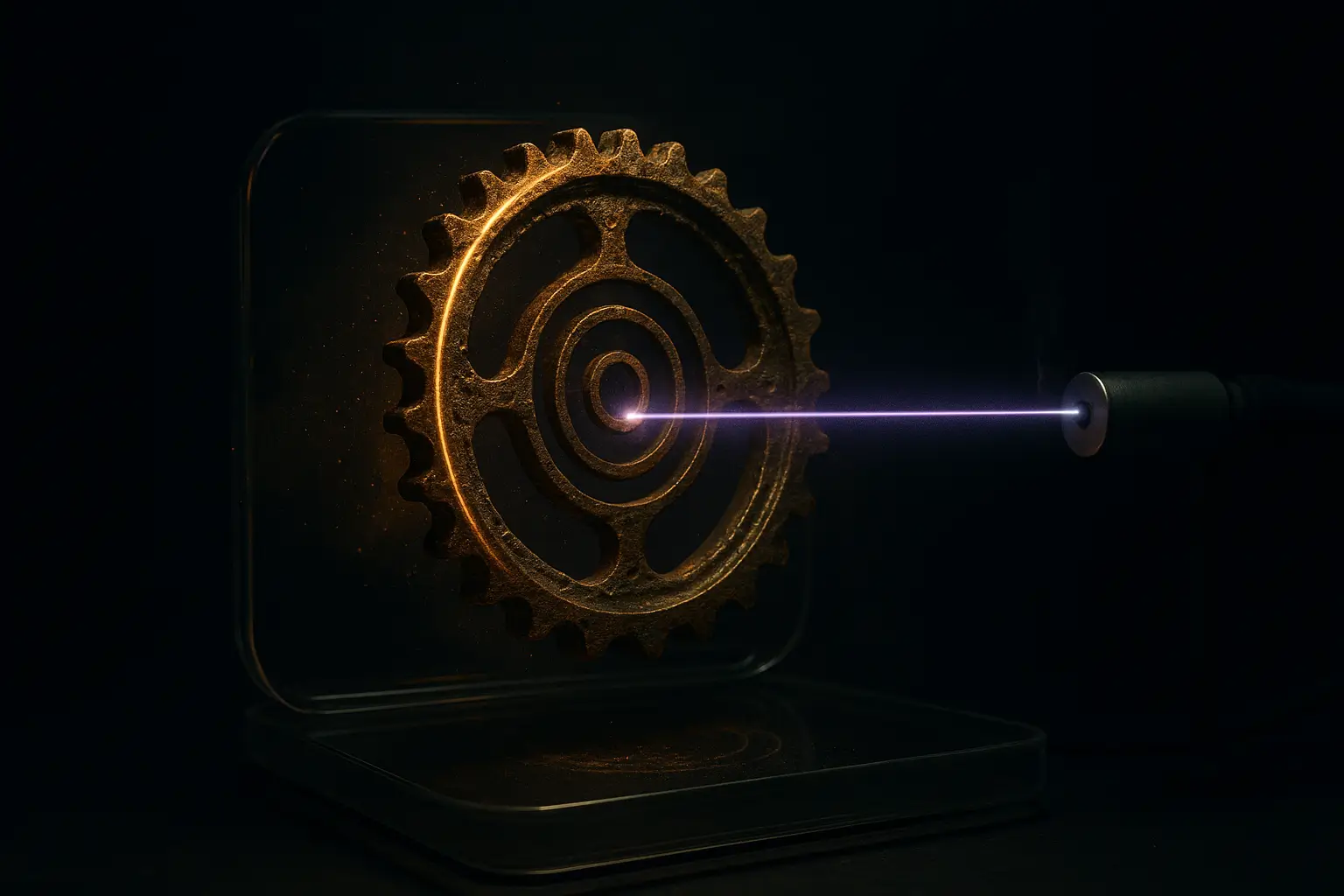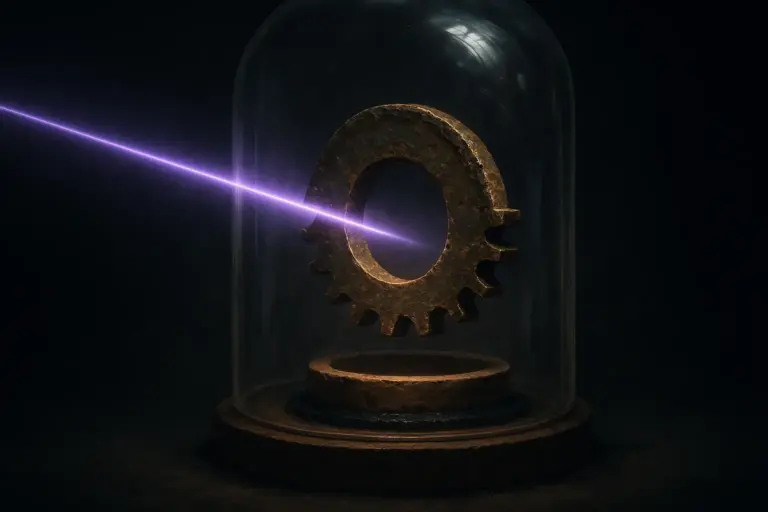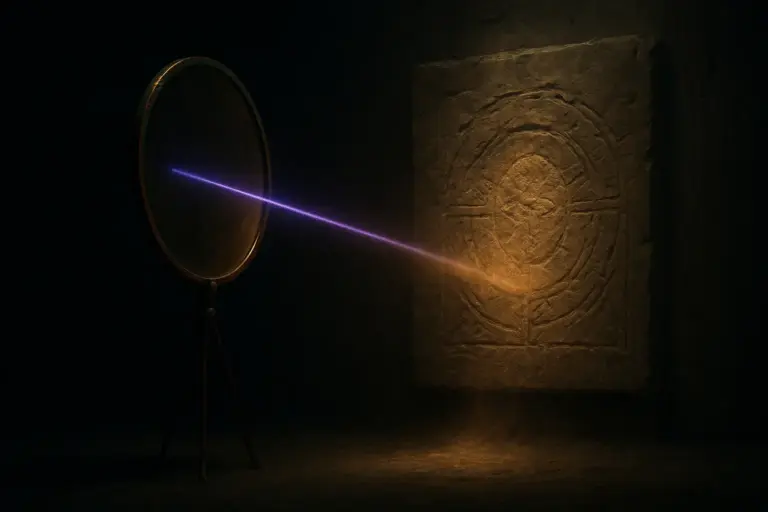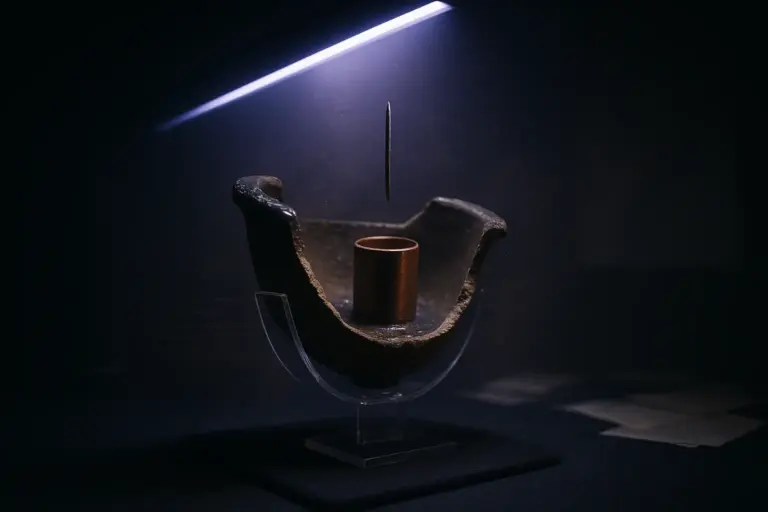The Antikythera Mechanism: Analyzing the Purpose of an Ancient Computer
Corroded bronze gears from a deep wreck confirm the antikythera mechanism purpose, a hand-turned calculator that mapped the sky before its time was due.
On a worktable lit like a low tide, fragments of greened bronze carry teeth that should not exist 2,000 years ago. The first divers expected statues and amphorae, not a fused gear train that solves the sky. In the quiet between clicks of the calipers, a contradiction hums: complexity where history taught simplicity. CT slices reveal numbers speaking in cycles, not cargo tallies. The antikythera mechanism purpose is not navigation by chance, but calculation by design, and something once sat where the fractures now refuse to answer.
- What the Video Adds (Quick Summary)
- The mechanism predicts celestial events with precision centuries ahead of its time
- 1901 discovery revealed complex gear systems designed to track lunar eclipses and planetary positions
- X-ray analysis exposed inscriptions detailing functions lost to history
- Device suggests knowledge lineages that challenge accepted technological timelines

Epicyclic gears rewrite the ancient Greek computer narrative
When modern scanning turned the corroded mass transparent, it exposed nested epicyclic gears, differential ratios, and engraved instructions that do not speak the language of trade. They describe a sky mapped to brass. Inscriptions reference cycles familiar to astronomers, not merchants: Metonic and Callippic counts to reconcile lunar months with solar years, and a Saros tally to anticipate eclipses. Computational models, tested against the surviving fragments, propose a front display that recreated planetary synodic motion and the lunar anomaly through carefully tuned trains—a mechanical synopsis of the cosmos rather than a simple pointer and dial (Source: Nature, 2021-03-12, cosmos model of the mechanism).
Records indicate more than thirty wheels originally meshed within a wooden case. The dial work at the back linked date to prediction, converting hand turns into a timetable of shadows. The precision implied by those ratios suggests intention calibrated against observational knowledge, not ritual. Yet the device remains a partial sentence, its missing words guessed at through scars in the metal and notes in the margins of time. For those tracking similar threads of suppressed engineering sophistication, the hidden record offers parallel cases where complexity defied chronology.
CT scanning and inscriptions confirm astronomical calculator
The shipwreck that yielded the fragments sits off Antikythera, a high-value cargo snapped by a storm and buried in silt. Subsequent expeditions, separated by a century, recovered statuary, jewelry, and new fragments that tightened the mechanical tally. Institutional dives and surveys placed the object within a luxury assemblage, plausible for a learned instrument rather than a sailor’s tool. Field summaries make clear that the site continues to give up context as technology improves and the seabed shifts (Source: Woods Hole Oceanographic Institution, 2017-05-01, Antikythera shipwreck context).
X-ray tomography and microfocus CT made the inscriptions legible along the inner faces of plates once hidden, revealing index names, cycle lengths, and explanatory text. The back dial inscriptions align with eclipse prediction schemes, including month indexing that matches the Saros and Exeligmos, while front reconstructions integrate retrograde motion using epicyclic carriers to simulate planetary loops. These reconstructions now sit within the broader lost technologies archive, where instruments outpace their attributed eras. Public research timelines chart the sequence from discovery to decryption, showing community cross-checks between engineering, epigraphy, and astronomy rather than leaps of belief (Source: Computer History Museum, 2019-08-01, research timeline overview).
The antikythera mechanism purpose, by this evidence, resolves into a compact astronomical calculator. Hand-turned, it mapped dates to sky states, anticipated eclipses, and likely displayed planetary phases of visibility in a single analog scene. The device reads like a syllabus of Hellenistic astronomy written in gear ratios.
The dial turned and numbers became sky.
Redactions and disputes in the Antikythera mechanism record
The archive shows contention at the origin. Early attributions and identifications moved between names in museum registers, with debates over who first recognized gear teeth amid corrosion and how the fragments were cataloged. Historiography traces the chain from sponge divers to curators and scholars, marking where notes were cautious, mistaken, or erased by time. This is not conspiracy, but the fog of recovery and the politics of credit in a crowded room (Source: University of Bristol, 2016-11-29, discovery attribution record).
Mechanical limits press back on ideal models. Recent discussions argue that tolerances, friction, and cumulative backlash may have constrained accuracy, and that certain reconstructions assume pristine manufacture improbable at scale. Design critique targets specific sub-assemblies and dial crowding, suggesting that some indicators might have been difficult to read or to keep synchronized over long intervals. The working truth likely lives in between: an ingenious instrument with performance bounded by material reality (Source: Archaeology Magazine, 2025-04-15, design flaws discussion).
One gear was missing—the one that balanced the sky.
What this ancient Greek computer implies for engineering lineages
The mechanism pushes the timeline of complex gearwork back with authority, not rumor. It signals a learned workshop where astronomical theory, metalworking skill, and inscription practice converged. If instruments like this circulated among elites, then technical knowledge traveled with them, migrating across ports and schools, each copy a commentary on how to make the heavens mechanical. For those examining parallel cases where gears that mapped time emerge from antiquity, the pattern suggests networks of transmission rather than isolated genius. Institutional overviews now place the device in the ancestry of computing, a physical algorithm executed by hand and patient gearing (Source: German Patent and Trade Mark Office, 2025-04-16, historical computing context).
Open questions remain marked in pencil: the exact count and form of lost gears, the fidelity of planetary displays, the workflow of maintenance and calibration, the audience and setting of use. But the core reads steady. The antikythera mechanism purpose aligns with prediction and education, compressing cycles into a teachable, turnable cosmos—an object lesson that computation can be made of brass and intent.
Sources unsealed on the Antikythera mechanism
Primary investigations and reconstructions underpin this dossier: (Source: Nature, 2021-03-12, cosmos model of the mechanism); (Source: Woods Hole Oceanographic Institution, 2017-05-01, Antikythera shipwreck context); (Source: University of Bristol, 2016-11-29, discovery attribution record). Complementary institutional and media analyses extend the view: (Source: German Patent and Trade Mark Office, 2025-04-16, historical computing context); (Source: Computer History Museum, 2019-08-01, research timeline overview); (Source: Archaeology Magazine, 2025-04-15, design flaws discussion); (Source: Phys.org, 2012-10-04, return expedition report).
Final transmission from the ancient Greek computer
The bronze teeth rest in a foam cradle, shadows of constellations crossing a lab wall. A hand turns an absent crown, and imagined dials answer with months, eclipses, and loops in the dark. In these ratios, intent survives the sea.
To follow the threads through our archive, move through Home, step into Hidden History, and descend to Lost Technologies.
Signal fading—the pattern holds.
What was the antikythera mechanism purpose according to current evidence
CT and X-ray tomography reveal inscriptions for Metonic and Saros cycles and gearing consistent with lunar anomaly and planetary motion. Most reconstructions indicate a hand-turned astronomical calculator used to display calendars and eclipse predictions. Source: Nature, 2021-03-12, nature.com
How did the ancient Greek computer predict eclipses
Back dials track the Saros and Exeligmos cycles so that specific months and nodes align with expected eclipses. Inscriptions act as a key to read when and where shadows would fall relative to the calendar. Source: Woods Hole Oceanographic Institution, 2017-05-01, whoi.edu
What remains uncertain about the Antikythera mechanism reconstruction
Several plates and gears are missing and tolerances for long-term accuracy are debated, leading to multiple plausible gear trains. Scholars differ on exact counts and readability of crowded scales, so any model is provisional. Source: Archaeology Magazine, 2025-04-15, archaeology.org
They Don’t Want You to Know This
Join the society of the curious. Get early access to leaked findings, hidden knowledge, and suppressed discoveries — straight to your inbox, before they vanish.




